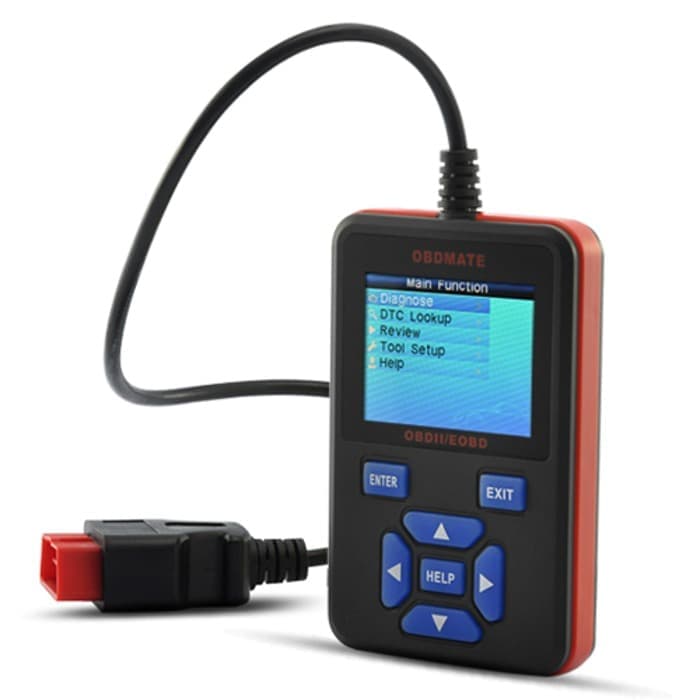Table of Contents
Home » The Ultimate Guide to OBD2 Readers: How They Work and Why You Need One
Introduction
If you’re a car owner, you know how frustrating it can be when your car suddenly breaks down or starts acting up. Diagnosing the issue can be time-consuming and expensive if you take it to a mechanic. That’s where OBD2 readers come in handy. In this article, we will cover everything you need to know about OBD2 readers, including their definition, purpose, brief history, and more.
What are OBD2 Readers?
An OBD2 reader is a diagnostic tool used to retrieve and display data from a car’s onboard diagnostic system. It is designed to help car owners and mechanics troubleshoot and identify issues with their vehicles quickly and easily. The OBD2 reader communicates with the car’s onboard computer to retrieve data and error codes.
A. OBD2 Reader Components
An OBD2 reader consists of three main components:
- Connector – connects the reader to the car’s OBD2 port
- Processor – retrieves data from the car’s onboard computer
- Display – displays the retrieved data and error codes
B. How Data is Retrieved and Displayed
The OBD2 reader retrieves data from the car’s onboard computer through the OBD2 port. The data is then displayed on the reader’s screen. The reader also displays error codes that indicate specific problems with the vehicle.
C. Understanding Error Codes
Error codes are displayed in a specific format that helps identify the problem with the vehicle. The codes are usually alphanumeric and consist of five digits. The first digit indicates the type of problem, and the remaining digits provide more specific information about the problem. OBD2 readers come with a list of error codes and their meanings to help car owners and mechanics diagnose the issue.
III. Benefits of Using OBD2 Readers
Using an OBD2 reader can save you time and money on car repairs. Here are some of the benefits of using OBD2 readers:
A. Saves Time and Money
By using an OBD2 reader, you can quickly identify the problem with your vehicle and avoid paying for a mechanic to diagnose the issue. OBD2 readers are also relatively affordable, so you can save money by diagnosing and fixing the issue yourself.
B. DIY Car Repairs
OBD2 readers allow car owners to diagnose and fix the issue themselves. With the error code information provided by the reader, car owners can research and understand the problem, which can lead to DIY car repairs. DIY car repairs can save car owners a significant amount of money on mechanic fees.
C. Real-time Vehicle Monitoring
OBD2 readers allow car owners to monitor their vehicle’s performance in real-time. This can help car owners identify potential issues before they become major problems, saving them money on future repairs.
D. Access to Critical Vehicle Information
OBD2 readers provide access to critical vehicle information, such as the vehicle’s VIN, diagnostic trouble codes, and freeze frame data. This information can be helpful when purchasing a used vehicle or when performing maintenance on a vehicle.
Conclusion
In conclusion, OBD2 readers are valuable tools that allow car owners to diagnose and monitor their vehicles in real-time. By retrieving and interpreting data from the car’s onboard computer, OBD2 readers can provide valuable information about the health of your car and help you diagnose and fix problems yourself.
One of the main benefits of using an OBD2 reader is that it can save you time and money. By diagnosing the problem yourself, you can avoid expensive trips to the mechanic and fix the problem quickly. OBD2 readers also allow you to do some DIY car repairs, which can save you even more money and give you a sense of satisfaction knowing that you fixed the problem yourself.
Another benefit of using an OBD2 reader is that it allows you to monitor your car’s health in real-time. You can use an OBD2 reader to check for error codes even when the check engine light isn’t on, which can help you catch problems early and take appropriate action before they become more serious. Additionally, OBD2 readers provide access to critical vehicle information such as fuel efficiency, engine temperature, and vehicle speed, which can help you make informed decisions about your car and its maintenance.
When it comes to choosing an OBD2 reader, there are several options available. Wired OBD2 readers are generally more reliable than wireless OBD2 readers but can be less convenient to use. Wireless OBD2 readers, on the other hand, are more convenient but can be less reliable. OBD2 reader apps are another option, allowing you to use your smartphone or tablet as an OBD2 reader, eliminating the need for a separate device.
Using an OBD2 reader is a straightforward process. Start by locating your car’s DLC, which is usually located under the dashboard on the driver’s side of the car. Once you’ve located the DLC, plug the OBD2 reader into the port. The OBD2 reader will then communicate with your car’s onboard computer to retrieve data, which will be displayed on the OBD2 reader’s screen. Error codes are standardized and can be interpreted using a reference guide, which is usually included with the OBD2 reader.
In summary, OBD2 readers are valuable tools for car owners that provide real-time monitoring and diagnostic capabilities. They can save you time and money by allowing you to diagnose and fix problems yourself, and provide access to critical vehicle information. When choosing an OBD2 reader, consider your needs and preferences, as there are several options available. With a little bit of knowledge and the right OBD2 reader, you can take control of your car’s health and make informed decisions about its maintenance.


